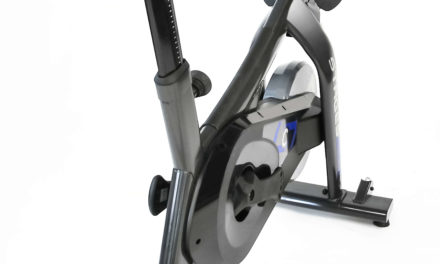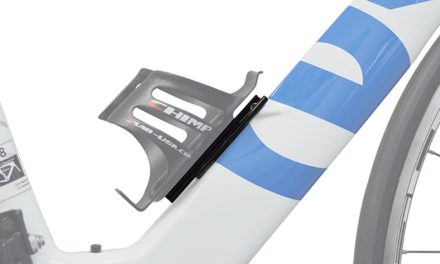
Calculating 10,000 Steps And Cycling

Calculating 10,000 steps and cycling, is it even possible? Today there are lot’s of ways to calculate steps while walking and running, but there really aren’t step calculators for cycling. It can be sort of frustrating if you are a big-time step counter and your step counting watch doesn’t evaluate steps when riding a bike. You would think a company like Garmin or Polar would come out with a device to do it, but I haven’t seen one yet.
Is Calculating 10,000 Steps And Cycling Possible?
Fortunately converting cycling time to steps is relatively easy once you know the process. Step counting for cycling can be based on intensity. To convert cycling or other exercises into steps a good rule of thumb is to use the Talk Test method with the conversions below.
- Low Intensity – 1 min Low intensity (gentle) = 85 steps
Talk Test: Low intensity – You basically can carry on a normal conversation without breathing difficulty. - Moderate Intensity – 1 min Moderate/Brisk intensity (comfortable) = 150 steps
Talk Test: Moderate Intensity – You’re now warmed up and you’re beginning to have breathing issues, but nothing too strenuous. - High Intensity – 1 min High Intensity (tolerable intensity but not for a long period of time) = 200 steps
Talk Test: High Intensity – The pace has picked up to the point where you would have a very difficult time talking. - Crazy Hard Intensity – 1 Min All Out (crazy hard intensity) = 265 steps
Talk Test: Yea right – The only talking is in your head and it’s screaming how painful this is.
For example, let’s say I go for an hour ride and I stay within the Low Intensity to Moderate Intensity zones and break the ride up into the following
10 minutes of Low Intensity
40 minutes of Moderate Intensity
10 minutes of Low Intensity
The step calculation would be
85 steps x 10 minutes
150 steps x 40 minutes
85 steps x 10 minutes
The final step count for the ride would (85 x 10) + (150 x 40) + (85 x 10) for a final result of 7,700 steps.
If I wanted to get to the magic 10,000 steps, I would need to ride an additional 16 minutes at a moderate pace or 11.5 minutes at high intensity or 8.6 minutes at Crazy Hard Intensity.
There is a ride here in Austin that starts at ATC (Austin Tri-Cyclists). It starts out at a low intensity for 5 minutes and then picks up to moderate for 15 minutes and then high intensity for 40 with occasional all-out sessions.
Based on this ride I would calculate the steps something like this
85 steps x 5 minutes
150 steps x 15 minutes
200 steps x 40 minutes
265 steps x 4 minutes
So this ride would roughly be equivalent to 11,735 steps.
There you have it. You might have to remember your activity level during the ride and do some mathematics, but it is pretty basic.
If you ride at a moderate intensity for a little over an hour, you will hit your 10,000 steps. Up your intensity and you can cut the ride time by probably 10 or more minutes. Now, of course, the talk test method is biased and based on you’re own perceived exertion, but it is a good estimator of steps.
Convert Cycling Miles To 10,000 Steps
If you prefer a more simplistic approach you can try using the following conversion.
Cycling Miles To Steps Conversion Formula: 1km/0.621 miles cycling equals 300 steps
So for example, if you biked 20 miles you would divide that number by .621 and then times it by 300.
20 / .621 = 32.21
32.21 * 300 = 9,661 Steps
Now the problem with this formula is it doesn’t take into account speed or intensity, which certainly can affect the calculation given 2 people with different intensities and speed.
When running the faster you run, the more miles you need to cover to get the same steps as someone who is walking. The reason for this is due to stride length. The faster you run the longer your stride is, which means for every mile cover, fewer steps will be taken vs someone who is walking the same route.
When I go for a fast run I might need to cover 7+ miles to get to 10,000 steps vs when I walk I might only need to go 5 miles.
Convert Cycling Calories To 10,000 Steps
The difference in energy burned during running and cycling has to do with linear vs exponential effort. When you run, as your speed increases the effort is linear. In cycling, as your speed increases the effort is exponential, which is mostly caused by wind resistance.
The end results are that when a person runs a mile they will roughly have the same calories burned as another person of the same build, regardless of speed. This is a lot different than when riding a bike because energy burned can be greatly different depending on speed. Other factors such as the bike setup can also affect energy burn, including things like better wheel bearings, different gear ratios and so on.
When trying to convert cycling calories to steps using a rough estimate of 100 – 150 calories per 2,000 steps.
On the bike where a person burns between 500 – 750 calories, they are most liking performing around 10,000 steps.
Convert Cycling Cadence To 10,000 Steps
I haven’t really seen any great Cycling Cadence to Step Calculators, so here is my take.
Take your average cadence and times it by a cadence factor 1.85 to get the average step cadence per minute. Next, divide this value into 10,000 steps to determine time on the bike.
For example, if I have an average cadence of 90, then I would take 90 * 1.85 to get 166.5 steps per minute. Take the 10,000 steps and divide it by the 166.5 to get 1 hour of riding.
90 / 1.85 = 166.5 steps per minute
10,000 / 166.5 = 60.06 minutes
In this formula the higher cadence you keep, the less time you need to spend on the bike to get to the magic 10,000 steps. If the step values feel off, just adjust the cadence factor up or down.






















Good article – I’m just researching how to factor my ride mileage into steps, to see how close I come to WHO’s vaunted 10K-steps-a-day.
I tend to measure ride intensity by my heart rate. Like many, I monitor my heart’s bpm using a chest strap, recording it with an app (Wahoo’s app, in my case.)
Say, this morning, I rode 20 miles at an average heart rate of 150 bpm, for 1 hour 30 minutes. That’s 13,500 beats.
How far could I walk, jog, or run, given a comparable heart rate budget? Tomorrow I’ll find out, then do the math.
While my heart and lungs remain a constant for either type of exercise (as a hypothetical), I’m guessing it’s how my legs respond -their relative condition for transporting my entire mass on foot- that may well differ from cycling results.
Maybe I’ll report back here when I’ve got some useful results.
Cheers!